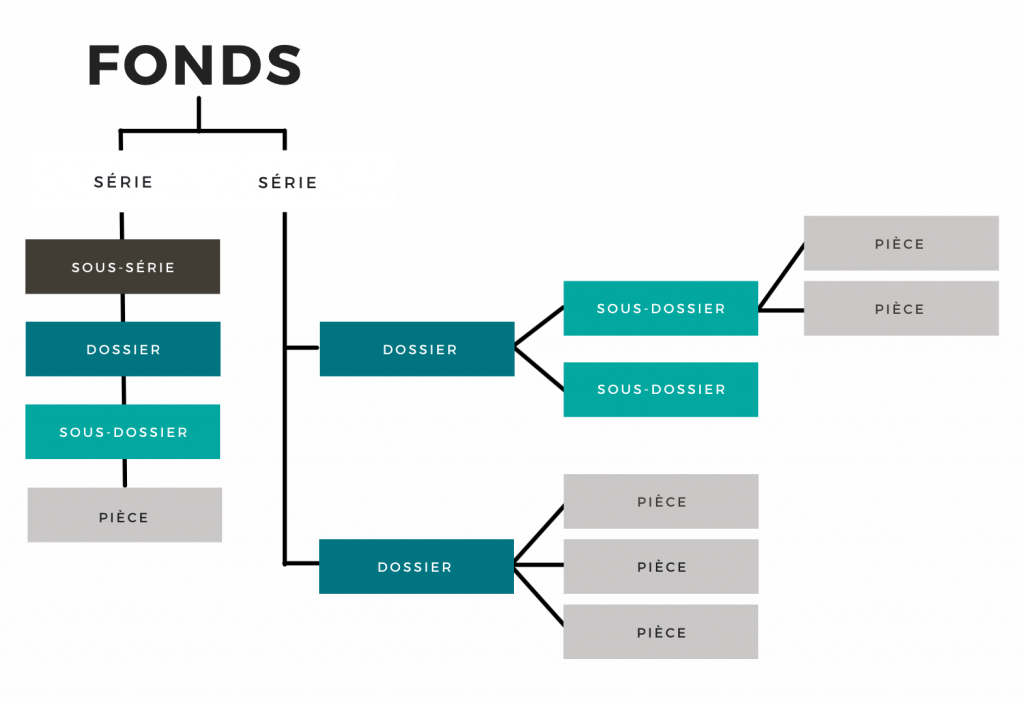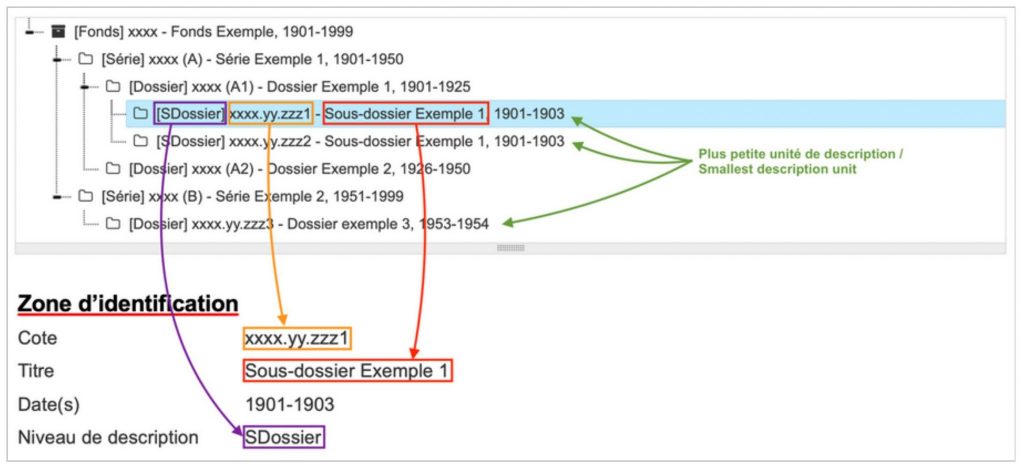In a library, documents are classified by subject or author, which makes it easy to find a book based on its content. In archives, however, the logic is different: documents are not sorted by topic but are preserved according to their origin and the context in which they were created.
Why? Because an archival document only fully makes sense within the framework in which it was created and used. If it were isolated and classified by subject, essential information would be lost: who created it, why, under what circumstances, and how it interacts with other documents. This approach ensures the integrity and reliability of sources.
This is why archives are organized into archival fonds: each fonds groups together all documents produced or received by an institution, a company, an architect, an engineer, etc., during their activities (Fonds Jean Tschumi, Fonds Alphonse Laverrière, Fonds COBAL…). Within a fonds, documents are further classified into files and sometimes into sub-files, following an organization specific to each creator.
Search – Select – Reserve
- To find out what files are available at Acm, consult the complete inventory on Morphé
- An effective search combines two approaches:
- The list of available fonds: starting from the general (the document producer, such as an architect or an institution) to reach specific files.
- The advanced search module: searching directly for a word or phrase to find precise results in the database.
Understanding how archives are organized:
The archival fonds are divided into series or files (in French, « dossier« ), which may also contain sub-files (in French, « sous-dossier » ou « SDossier »).
- In architectural archives, files often correspond to architectural projects, grouping together documents related to the design, construction, or evolution of a building.
- Sub-files may sometimes reflect different phases of the project, such as sketches, final plans, execution plans, etc.
- But other types of files also exist: some series may contain correspondence, photographs, publications, or general research by the architect.
Tips for research
- ? Don’t stop at the first file you find! To get a complete view of a project or an architect, explore all the series of the fonds: a technical document can be complemented by correspondence, a construction site photograph, or a handwritten note that enhances your understanding.
- ? Think beyond just architect names or buildings! Explore broader concepts or themes. This may uncover unexpected resources and enrich your research.

– Check the material extent: some files may be extensive, so it is important to ensure they contain the documents you need.
series = a subdivision of the fonds grouping files of the same nature or related to the same function (e.g., projects, correspondence, photographs, administrative documents).
file = a set of documents gathered by their creator to manage an activity or handle a matter. A file may contain sub-files and sometimes sub-sub-files, reflecting the structure of the work or process they originate from.
Each archival file has a reference code, in French « cote« , meaning a unique code that allows it to be identified and retrieved within the fonds.
At the Archives de la construction moderne, the reference codes for files or sub-files are structured as follows:
- « xxxx.yy.zzzz »
- « xxxx.yy.zzzz/ww »
How to read this reference?
- « xxxx » refers to the archival fonds to which the file belongs (often linked to an architect or an institution).
- « yy » usually corresponds to a specific series within this fonds (e.g., projects, correspondence, photographs).
- « zzzz » is the file number (or sometimes a sub-series number), identifying a project or a set of documents.
- « /ww » indicates a sub-file or a specific document, which may correspond to a particular phase of a project (e.g., plans, studies, site reports).

- Go to the MorphéBook reservation platform and fill out the form:
- Provide:
- The exact reference code (« cote« ) of the file.
- Its title, copied and pasted from the inventory to avoid errors.
- You can request up to 10 files at a time.
- Select a date for your visit (we are open on Tuesdays and Wednesdays from 9:00 AM to 12:00 PM and from 1:30 PM to 5:00 PM).
- Submit your request at least one week in advance.
Archival materials are often fragile, unique, and irreplaceable. To ensure their preservation, they can only be handled in a controlled environment.
? Why isn’t everything digitized?
Digitizing archives is a long, costly, and complex process that cannot be systematic. Some documents, due to their format, material condition, or legal restrictions, are not eligible for digitization.